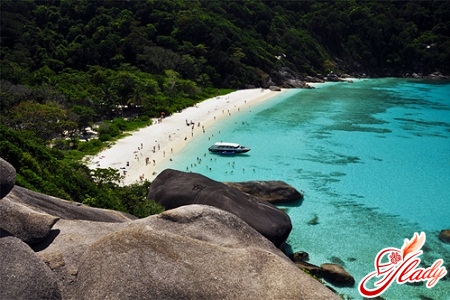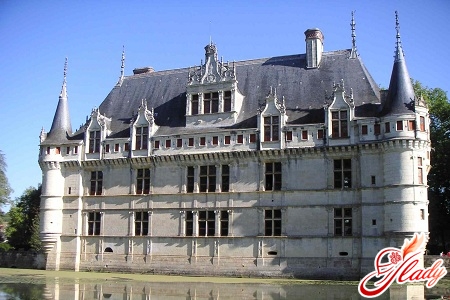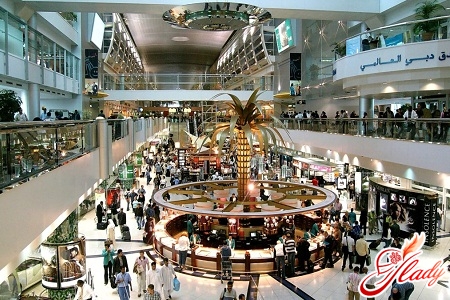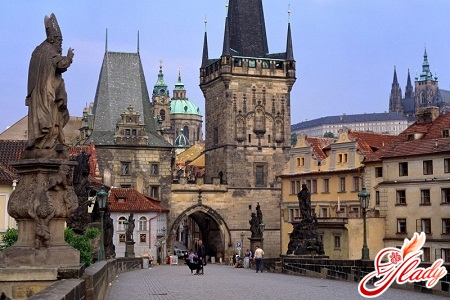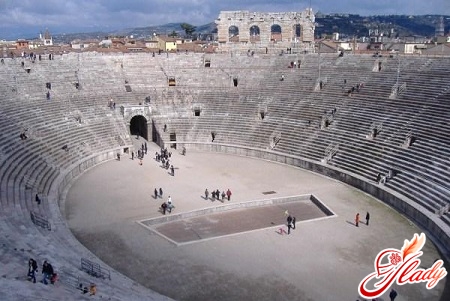
Verona is a small but very cozy city,which is considered to be one of the most beautiful in the world. On the territory of the city there are preserved monuments of culture and history, ancient sights and simply beautiful places that can turn a walk into a fabulous and truly fascinating journey.
Verona Amphitheater
The famous Verona amphitheater is located on thePiazza Bra - the main square of the city. In size it is the third antique amphitheater, which was erected in the era of ancient Rome. The historians date this building to the year 30 of our era: at that time the structure consisted of 4 elliptical rings, and was lined with pink and white limestone. Today its facade is made of brick, river pebbles and stone. The Amphitheater of Verona in 2000 was included in the list of World Heritage, which is under the protection of UNESCO. Approximately 2 thousand years ago on the amphitheater stage, which housed more than 30 thousand people, conducted gladiatorial fights, characterized by cruelty, circus performances and naval battles-navmahii. Already in those days began to be created today's attractions in Italy. To the great regret, the strong earthquake that occurred in 1117 almost completely destroyed the outer walls of the structure. But even after that, the role of the arena did not diminish: during the Middle Ages, knight tournaments, festivals, exemplary executions of heretics, as well as bullfighting, which Italy can boast to this day, were held in the arena. In the 20th century, the amphitheater became one of Verona's main venues, where opera performances are held, which annually attracts more than half a million spectators. The first performance was "Aida" Giuseppe Verdi, which became a kind of business card of this theatrical scene. Since that time, there have been many legendary performers such as Luciano Pavarotti, Maria Callas, Renata Tebaldi, Placido Domingo and other world-famous stars. On the arena there are also concerts of pop stars. Quite recently the capacity of the amphitheater was 20 thousand spectators, but now, for security reasons, it is reduced by as much as 5 thousand. Thanks to the amphitheater and other less famous landmarks of the city, thousands of tourists visit. 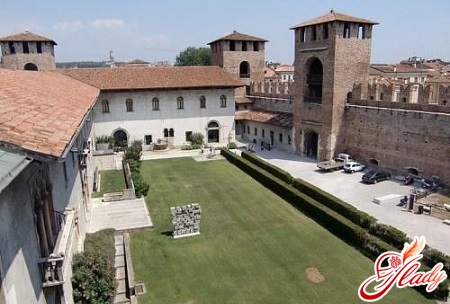
Roman Ancient Theater
The Roman Ancient Theater is located on the territoryVerona on the hill of San Pietro. This building was built at the end of the 1st century AD. To date, well-preserved kaveya with steps, skeny, laid out of bricks, and orchestras with seats for important viewers. Directly in front of the stage is a proscenium, behind which was at one time a curtain. The width of the cava is 105 meters, while it "leans" on the hill, and on the sides is supported by walls. In distant times there were 3 wide terraces above it. Today, in their place towers the famous Castel San Pietro. The Roman Antique Theater was decorated with semi-columns, each with a different style on each floor: on the first floor it was Tuscan style, on the second floor - Ionic, and on the latter there were pillars. It is remarkable that the sights: the Roman Ancient Theater and the Verona Amphitheater are often confused. The theater is very close to the Adige River, because of which he repeatedly suffered from severe floods, which led to the fact that in the Middle Ages the whole area was covered and built up with buildings. Once upon a time in the territory of the Roman Ancient Theater was even the residence of Theodoric the Great, King of the Ostrogoths. Only in 1830 the theater began to be brought back to life: the dilapidated buildings that were erected on the site of the stage were completely demolished, the amphitheater itself was neatly dug out, and numerous arches and a wide staircase were restored. On the hill of San Pietro in 1851 were found the remains of an ancient temple that crowned the structure of this theater. "New discoverer" of it was a rich businessman Andrea Monga, who bought this territory and ordered to conduct excavations on it. In 1904, all the land on which the structure is located, became the property of Verona. It is worth noting that all of Northern Italy has no more majestic theater. Today, near the ancient theater stands the monastery of San Girolamo and the church of Syrah and Libera, which was rebuilt in the 10th century. Saint Cyr is the first Christian priest of the city, who secretly performed liturgies in the theater building. 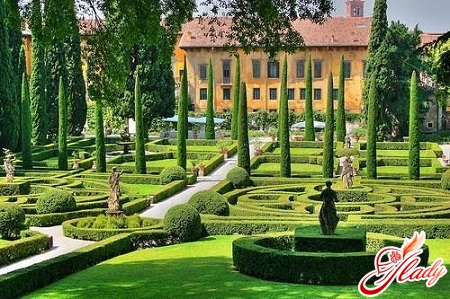
The famous arch of Gavi
Arch of Gavi was built according to the project of LuciusVitruvius Cerdon in the second half of the 1st century. Its name was given to the arch in honor of the Gavia family, who was considered one of the most notable in those days. In the Middle Ages, this arch was in the city wall and was used as the main entrance to the city. This wall of Verona was surrounded by the decision of the City Council. In the 16th century, various structures were built to the arch, shops and artisan shops. In the Renaissance, architects and artists took Arch Gavi for a sample of this classic style in the construction of churches, chapels and chapels, which are rich in all of Northern Italy. In 1805, when all of Italy was captured by Napoleon, the arch was completely disassembled to facilitate access to the city by the French troops. The stones of the monument were first placed in Piazza Cittadella, and a little later moved to Verona amphitheater. In 1814, for the laying of a new road, the lower parts of the columns and the base of the arch, which remained at the same place, were dismantled. The historical monument was restored in 1932 from preserved materials and installed near the place where it was originally located, near Castelvecchio Castle. In the arch Gavi, only 1 span. The facades of the arch are decorated with half-columns, and the opening itself is decorated with a decorative frieze with a beautiful floral ornament. The height of the structure is 12 m 69 cm. The facade faces Via Via Postumia. The pedestal of the arch is composed of 4 limestone blocks, columns - of 11 blocks, and for the attic and entablature it took only 3 blocks. In the side niches of the structure once stood statues depicting members of the Gavi family. An interesting detail: just below the arch itself you can see a fragment of the road that was built in ancient Rome. Italy would have lost many tourists without having such a majestic arch. 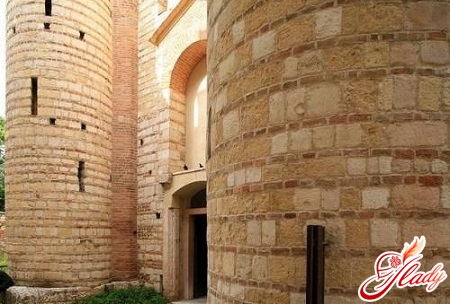
Three arches of Scaligers
These arches were located near the churchSanta Maria. Arches of Scaligers are gravestones in the Gothic style of three medieval rulers of the Scaliger family, who were in power in the 13th and 14th centuries. The arches were modeled after the suspended sarcophagus of Guglielmo di Castelbarco, which was built in 1320. Today this sarcophagus can be seen near the church of Anastasia. At the entrance to the church of Santa Maria there is a copy of the arch of Cangrande I, which is made in the form of a tabernacle - an open tower-shaped annex. The original arch of Cangrande I is kept in the large museum of Castelvecchio. The author of this creation is unknown, but many art historians believe that the arch was erected by Giovanni Regino. Kangrande I is considered to be the greatest of the kind Scaliger, he is depicted on the headstone in two poses: sitting on a horse and lying in the arms of death. This gravestone is one of the most outstanding examples of sculpture in Italy of the 14th century. These attractions are among the most famous in Verona. The second arch is Mastino II. This structure is decorated with numerous figures of saints and angels, and Mastino himself is depicted on an arch sitting on a horse and dressed in armor. The construction of this arch was started during the lifetime of this ruler, while he died in 1351. The last arch, the arch of Cansigniori, was built in 1375 by the masters from Bologna Bonino da Campione and Gaspare Broaspini, it has a hexagonal shape, and its twisted columns adorn it. On the facets of the gravestone there are bas-reliefs and sculptures, and on the top there is a statue of Cansignorio. By the end of the 16th century, the arches of the Scaligers came to total desolation. The restoration of the monument was carried out only in 1839. Today, these attractions attract thousands of tourists every year. Not far from the Scaliger arches there are burials of other members of this family. 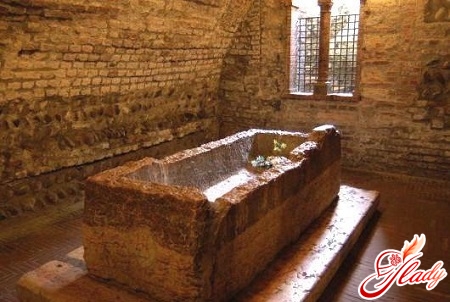
The world famous house of Juliet
Perhaps, Juliet's house is the most visitedVerona, which is sought to see thousands of lovers coming from all over the world. This house was built in the 13th century, and thanks to William Shakespeare, the whole world knows him. Once this house, which is located near the Piazza Erbe, was the property of the Dal Cappello family, which became the prototype of the Capuletti family. The emblem of the family in the form of a marble hat can still be seen on the archway that leads to the courtyard. In the 17th century, the house was sold, and since that time, he repeatedly changed his owners, until in 1907 he was not bought by the City Council of Verona in order to organize a museum there. By this time the house was almost dilapidated and required restoration and repair work. The municipality for a long time could not find the money for it, and only in 1936, after the release of the famous film "Romeo and Juliet" by George Cukor, began active work that was aimed at making the house an open tourist site with which all the available Attraction. The house of Juliet, in accordance with Shakespeare's play, was given a romantic appearance: the facade was decorated with elements of Gothic style, the windows were beautifully framed, and some structures that went into the courtyard were also reconstructed. The courtyard with Juliet's balcony, too, was rebuilt and looked very much like the courtyard of the movie Ciucora: a column appeared under the balcony and a crenellated wall. Later on the wall were placed lines from a Shakespearean play. In 1972, there was installed a statue of Juliet of bronze, which is still very popular among tourists. It is believed that if a person touches the right chest of the statue, then he will have good luck in love. Restoration work at home was made in 1970 and 1990. At the last restoration in the house with the help of appropriate frescoes and ornaments, the atmosphere and romanticism of the 14th century were recreated. In 1997, a museum was opened in the house of Juliet. To date, there you can see various works of art that were created on the theme "Romeo and Juliet", photographs and a collection of subjects from the film Franco Zeffirelli: marriage bed, two suits and sketches. Tourists, visiting the house of Juliet, leave on the walls of declarations of love. These Shakespeare attractions can compete even with the Statue of Liberty. 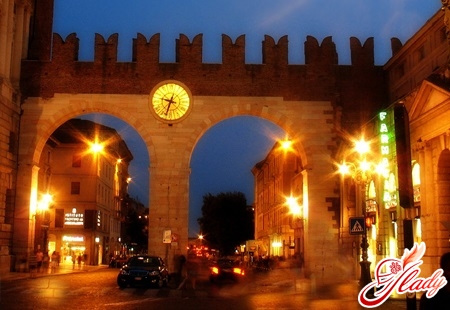
Ponte Pietra Bridge
Translated from Italian by Ponte Pietra means"a stone bridge". Ponte Pietra is an arched bridge that connects the banks of the Adige River. It was rebuilt almost at the end of the 1st century BC and was originally named Pont Marmoreus. As a result of a large number of reconstructions due to earthquakes and floods, he received the current name. Once on the bridge passed Postumieva road, leading from Genoa to a large pass, located in the Alps. In Roman times, a similar bridge was built nearby - Ponte Postumio. The total length of the Ponte Pietra is 95 meters. At the end of the Second World Ponte, Pietra was blown up by the retreating troops of Germany. In 1959, it was restored, while many original fragments were raised from the bottom of the river. Of course, it turned out not to find all the components of the destroyed structure, so for its reconstruction were used a variety of materials. In addition to white marble, red brick was used, which made the bridge more picturesque. Thanks to this, the sights of the city have got on their list one more majestic structure that has survived for hundreds of years. At one time Ponte Pietra was the only stone bridge in the territory of Verona.
Valpolicella Valley
Valpolicella - a picturesque valley, spread outin the vicinity of Verona. This valley became world famous thanks to the wines "Recioto", "Amarone" and "Ripasso". In the valley there are many historical and cultural values worthy of visiting. Even after seeing the sights of the whole world, this valley will be remembered forever. Tourists will like cozy little towns in medieval style: Pedemonte, San Pietro Incariano, Negrar, Fumane. In each town you can find more than one good winery. In addition to wine, Valpolicella is famous for its delicacies of local cuisine. For example, aged or fresh cheese "Monte Veronese", which is produced in the mountains of Verona, sausage "Risotto al Amarone" or "Soppressa". Do not be disappointed and lovers of natural beauty. On the territory of Northern Italy, beautiful landscapes and landscapes. So, in the city of Molina, which is located not far from Fumane, there is a very beautiful park "Cascades Molina" with hiking trails and picturesque waterfalls. It is very easy to get to Valpolicella Valley, since it is also Verona and all the residents know how to get there.
Verona Cathedral
The Cathedral of Verona is the mainthe church of the city, and it is in it is the episcopal chair. The construction of the Romanesque temple was started in the second half of the 12th century. The construction was carried out on the site of two churches of the pre-Christian period, which were destroyed by an earthquake in 1117. The new cathedral was completed and consecrated as early as 1187. In the 15th century, several rooms were added to the church, which gave it a Late Gothic outline. From the original appearance of the structure, only the entrance portal, decorated with winged griffins, was preserved. Above the entrance to the cathedral you can see the image of the Virgin Mary, which holds a small Jesus in her arms. Another portal is decorated with various scenes from the Old Testament and the figures of Roland and Olivier - knights from the medieval epic. These artistic attractions are known all over the world. Here are also images of ten prophets, the Hands of the Lord, and four evangelical symbols. Gothic windows of the facades of the cathedral serve as a reminder of the great restoration that was carried out in the 14th century. Elements of the Baroque style, located at the top of the building, were added there in the 17th century. The belltower, which began to build Michele Sanmikeli in the middle of the 16th century, remained unfinished. Historians note that these are not all the sights of the city, which the hand of this architect touched. Inside the cathedral is made in the Gothic style: pointed arches, columns of red marble, arches with golden stars on a soft blue background. Decorated side altars and side-altars of Giovanni Falconetto in the 16th century. There you can see the true works of art: "The Ascension of the Virgin Mary" Titian, "The situation in the grave" by Jolfino and the "Adoration of the Magi", which created the Liberals and Verona. Thanks to these creators, Italy received an undying history. Next to the cathedral there is a club, which is also in Romanesque style. The cloister is framed by a covered two-level gallery made of marble. From there you can go to the church depository of manuscripts and the baptistery, built in the distant 1123 year. In the baptistery there are many frescoes and paintings of the 13th and 15th centuries, and in the central nave there is a font carved in the 12th century from a single piece of marble. 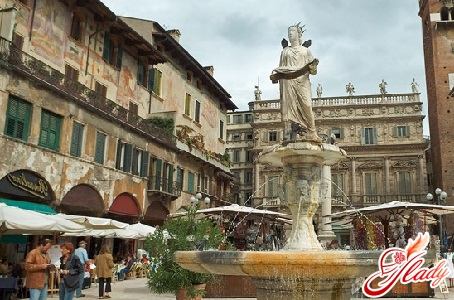
St. Peter's Castle
This castle was erected on the hill of San Pietro inVerona. Italy is proud of this structure. St. Peter's Castle stands on the site of an ancient Roman temple. The place for the erection of the castle was chosen not by chance: a picturesque hill from which you can see the whole city and the Adige River is an excellent strategic point. In ancient Roman times, at the foot of the hill, the first fortification was built, with the help of which control was taken over the passage through Adige, and a little later on the opposite shore a city appeared, later became Verona. All the sights of the city owe their appearance to this structure, which gave life to Verona. At a time when Italy was under the rule of the Venetian Republic, San Pietro with all the internal buildings was the residence of the military commandant. Large restoration work in the castle was carried out in the early 17th century. Numerous rooms for soldiers were repaired, barracks for infantrymen were enlarged, which, after restoration, could accommodate up to 460 people. In the 19th century, Napoleon seized power over the city, whose troops destroyed the entire castle. In those years, almost all the sights of Italy were destroyed. Of course, then the castle was restored.





